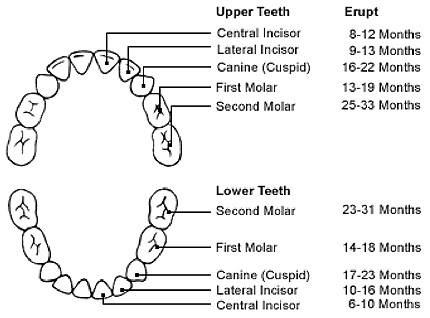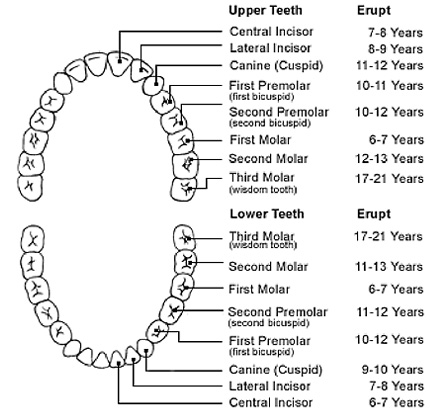Service Categories
Schneider Dental
8928 E. 96th StreetFishers, IN 46037
Phone: 317-598-9380
Fax: 317-813-1982
info@schneiderdentaloffice.com
Office Hours
Mon., Wed., and Thur.7:00am to 4:00pm
One Friday per month
One Saturday per month
Emergencies welcome
Dental Care
Brushing
Brushing is the most effective method for removing harmful plaque from your teeth and gums. Getting the debris off your teeth and gums in a timely manner prevents oral bacteria, in conjunction, with consumed food from turning into harmful, cavity-causing acids.Most dentists agree that brushing three times a day is the minimum to maintain optimal oral hygiene.
What is plaque?
Many of the foods you eat cause the bacteria in your mouth to produce acids. Sugared foods, such as candy and cookies, are not the only culprits. Starches, such as bread, crackers, and cereal, also cause acids to form. If you snack often, you could be having acid attacks all day long. After many acid attacks, your teeth may decay.
Plaque also produces substances that irritate the gums, making them red, tender or bleed easily. After a while, gums may pull away from the teeth. Pockets form and fill with more bacteria and pus. If the gums are not treated, the bone around the teeth can be destroyed. The teeth may become loose or have to be removed. In fact, periodontal (gum) disease is a main cause of tooth loss in adults.
One way to prevent tooth decay and periodontal (gum) disease is by eating a balanced diet and limiting the number of between-meal snacks. If you need a snack, choose nutritious foods such as raw vegetables, plain yogurt, cheese or a piece of fruit.
How do I brush my teeth?
- Place your toothbrush at a 45-degree angle against the gums.
- Use a circular motion to brush only two or three teeth at a time, gradually covering the entire mouth.
- Brush the outer tooth surfaces, the inner tooth surfaces, and the chewing surfaces of the teeth.
- Use the "toe" of the brush to clean the inside surfaces of the front teeth, using a gentle up-and-down stroke.
- Brush your tongue to remove bacteria and freshen your breath.
How do I floss my teeth?
- Break off about 18 inches of floss and wind most of it around one of your middle fingers. Wind the remaining floss around the same finger of the opposite hand. This finger will take up the floss as it becomes dirty. Hold the floss tightly between your thumbs and forefingers.
- Guide the floss between your teeth using a gentle rubbing motion. Never snap the floss into the gums.
- When the floss reaches the gum line, curve it into a C shape against one tooth. Gently slide it into the space between the gum and the tooth.
- Hold the floss tightly against the tooth. Gently rub the side of the tooth, moving the floss away from the gum with up and down motions.
- Repeat this method on the rest of your teeth.
- Don't forget the back side of your last tooth.
Back to the top of the page ↑
Eruption of Teeth
Primary Teeth Eruption Chart
Permanent Teeth Eruption Chart

Back to the top of the page ↑
Fluoride
What is fluoride?Fluoride is a mineral that occurs naturally in all water sources, including the oceans, in lakes and in underground water sources. Extensive research has shown that optimal levels of fluoride not only reduce cavities in children and adults, it also helps repair the early stages of tooth decay even before the decay is visible.
Why is fluoride important to the teeth?
Fluoride helps resist cavities from penetrating the teeth. Fluoride promotes remineralization of the tooth structure and helps resist tooth structure from decay.
How do I get fluoride?
Fluoride is a naturally occurring substance, and more than likely, you are ingesting it by the water you drink, and many of the foods that you eat. Many toothpastes and mouth rinses contain "topical" fluoride, and are expectorated or rinsed from the mouth without swallowing. Dentists recommend brushing with a fluoride toothpaste at least three times a day or after every meal, combined with a routine of flossing and regular dental checkups two times a year. As your dentist, we may administer a topical fluoride such as a gel or varnish. This material is left on for a few minutes, usually during a cleaning appointment. Some patients are prescribed a special fluoride gel for daily home use.
Sealants
Dental sealants act as a barrier, protecting the teeth against decay-causing bacteria. The sealants are usually applied to the chewing surfaces of the back teeth (premolars and molars) where decay occurs most often.Sealants are placed without anesthetic in the grooves of the teeth. By sealing the grooves with the plastic-like material the teeth are less likely to develop cavities.
Back to the top of the page ↑
Emergency Care
Bitten Lip or TongueClean the area gently with a cloth and apply cold compresses to reduce any swelling. If the bleeding doesn't stop, go to a hospital emergency room immediately.
Broken Tooth
Rinse your mouth with warm water to clean the area. Use cold compresses on the area to keep any swelling down. Call your dentist immediately.
Cracked Tooth
Sharp pain when chewing and not every time you chew. Possible cold sensitivity as well. Check with dentist for an evaluation.
Jaw Possibly Broken
Apply cold compresses to control swelling. Go to your dentist or a hospital emergency department immediately.
Knocked Out Tooth
Hold the tooth by the crown and rinse off the root of the tooth in water if it's dirty. Do not scrub it or remove any attached tissue fragments. If possible, gently insert and hold the tooth in its socket. If that isn't possible, put the tooth in a cup of milk and get to the dentist as quickly as possible. Remember to take the tooth with you!
Objects Caught Between Teeth
Try to gently remove the object with dental floss; avoid cutting the gums. Never use a sharp instrument to remove any object that is stuck between your teeth. If you can't dislodge the object using dental floss, contact your dentist.
Toothache
Rinse your mouth with warm water to clean it out. Gently use dental floss or an interdental cleaner to ensure that there is no food or other debris caught between the teeth. Never put aspirin or any other painkiller against the gums near the aching tooth because it may burn the gum tissue. If the pain persists, contact your dentist.
Fractured Teeth
If a tooth is fractured, rinse mouth with warm water and use an ice pack or cold compress to reduce swelling. Use ibuprofen, not aspirin, for pain. Immediately contact your dentist.
First aid for a dental emergency
Follow these simple first aid steps for a tooth that has been either knocked loose or knocked out:
- If a tooth is displaced, push it back into its original position and bite down so the tooth does not move.
- Call your dentist or visit the emergency room. The dentist may splint the tooth in place to the two healthy teeth next to the loose tooth.
- If the tooth is completely knocked out, pick the tooth up by the crown - not by the root, as handling the root may damage the cells necessary for bone reattachment and hinder the replant. If the tooth cannot be replaced in its socket, do not let the tooth dry out. Place it in a container with a lid and use low-fat milk, saline solution, or saliva. Visit the dentist as soon as possible - the longer the tooth is out of the mouth, the less likely the tooth will be able to be saved.
Back to the top of the page ↑
Children's Teeth
BrushingIt is very important to begin brushing or removing the plaque from the teeth once the first tooth is noticed in the mouth. It is a good idea to initially start with a moisten washcloth and rubbing the teeth to remove the plaque. As the child allows, introduce a toothbrush without toothpaste until the age of two. Once the child reached the age of two then dispense a small pea-size amount of ADA approved fluoride toothpaste onto the brush. Brush all surfaces of the teeth. Do not allow the child to swallow the toothpaste as excess fluoride consumption may make them sick. If it is suspected that too much fluoride has been ingested call Poison Control for instructions.
Teething
Most babies often start tooth eruption between 4 and 7 months old. However, some babies start earlier at around 3 months and some later around 1 year of age. The child will continue to develop their primary set of teeth until normally around 2 and a half years old or later. During this time they may experience discomfort, fussiness, fever, tender gums. The pain is usually soothed by a gently rubbing the gums with a clean finger, a cold teething ring, or cool spoon or gauze. Also, one could purchase Baby Oraljel over the counter but use sparingly.
Thumbsucking
Thumbsucking is a natural reflex and as the child developes this habit serves several purposes.
You may be concerned about your child's thumbsucking and wonder if it is harmful, at what age your child should stop, or what could happen if your child doesn't stop. Children often feel secure while thumbsucking. Also, they feel happy and learn about things by sucking on their thumbs, fingers, toes, pacifiers, etc. They may also help them sleep and relax them.
When the permanent teeth have erupted, sucking may present problems with the further development of the teeth and jaws. We often see problems or changes in the roof of the mouth from thumbsucking. Some aggressive thumbsuckers may even show signs in the primary or baby teeth, if this is thought to be a problem consult your dentist.
Children should have stopped thumbsucking by the time their front teeth are ready to erupt. Children usually stop between the ages of two and four years.
Pacifiers can affect the teeth similarly as sucking fingers and thumbs. However, it is often an easier habit to break.
Tips:
- Praise children for not sucking, instead of scolding them when they are. Positive reinforcement usually works better that negative.
- Children often suck their thumbs when feeling insecure or needing comfort. Focus on correcting the cause of the anxiety and provide comfort to your child.
- For an older child, involve him or her in choosing the method of stopping.
- Your dentist can offer encouragement to a child and explain what could happen to their teeth if they do not stop sucking.
- If the above tips don't work, remind the child of their habit by bandaging the thumb or putting a sock on the hand at night. Your dentist or pediatrician may prescribe a bitter medication to coat the thumb or the use of a mouth appliance.
Early Childhood Caries (Baby Bottle Tooth Decay)
Baby bottle tooth decay can destroy children's teeth. It occurs when a child is frequently exposed to sugary liquids such as milk, fruit juice and other sweet liquids. The ADA recommends the following steps to prevent your child from getting early childhood caries.
- Begin oral care early. Wipe the baby's gums with a wet washcloth or a clean gauze pad after each feeding.
- Babies and toddlers should finish their naptime and bedtime bottles before going to bed. Never allow your baby or toddler to fall asleep with a bottle containing milk, formula, fruit juices or sweetened liquids OR a pacifier dipped in sugar or honey.
- Encourage children to drink from a cup by their first birthday.
- Don't let children constantly sip on sugary liquids (including milk and juice) from training (sippy) cups. Offer these liquids at mealtimes.
- Help your child develop good eating habits early and choose nutritious snacks
Back to the top of the page ↑
Woman's Teeth
Because of the changes gone through in life, women can experience acute dental problems. Women's oral health problems, in many cases, can be related to surges in sex hormone levels, such as in puberty, menstruation, pregnancy, lactation, and menopause.The surge in hormones that occurs during puberty can cause swollen gums, especially during menstruation. Herpes-type lesions and ulcers also can develop. Girls may experience sensitive gums that react more to irritants.
Pregnant women often experience gum inflammation because of the surge of estrogen and progesterone in their bodies. If plaque isn't removed, it can lead to gingivitis - red, swollen, tender gums that are more likely to bleed. Oral contraceptives, which mimic pregnancy, could lead to gingivitis with long-term use.
Women with periodontal disease also are more prone to have pre-term, or low-birth weight babies, and pregnancy tumors, which are inflamed, benign growths that develop when swollen gums become irritated. Usually these tumors shrink soon after the pregnancy is over.
The stomach acids produced from vomiting caused by morning sickness can lead to tooth erosion. A paste made of baking soda and water should be used by rubbing not brushing it on the teeth.
